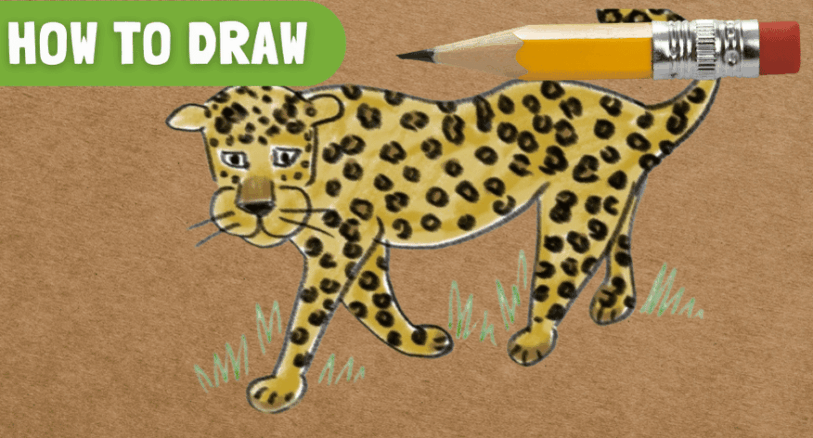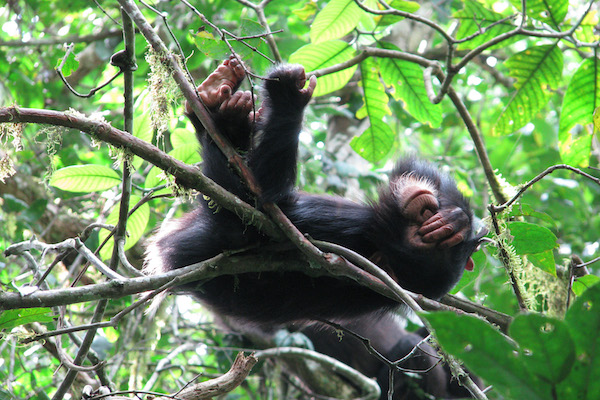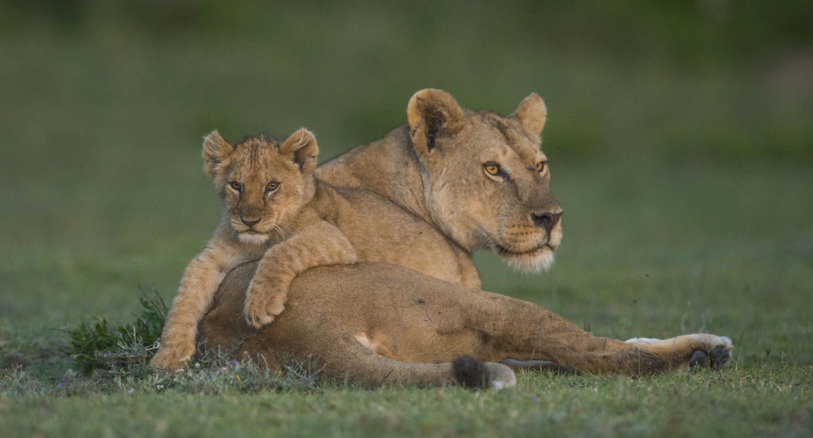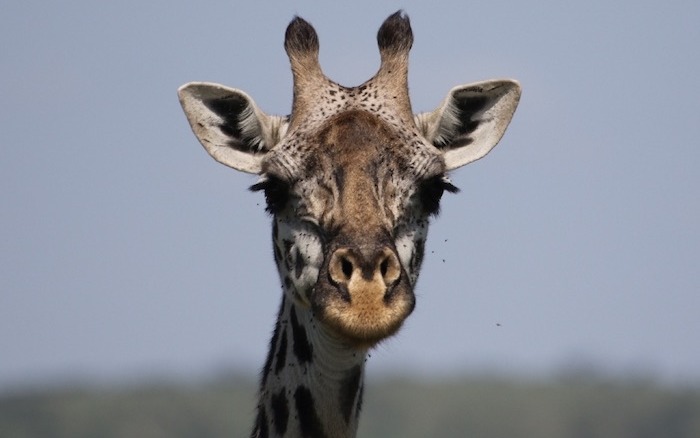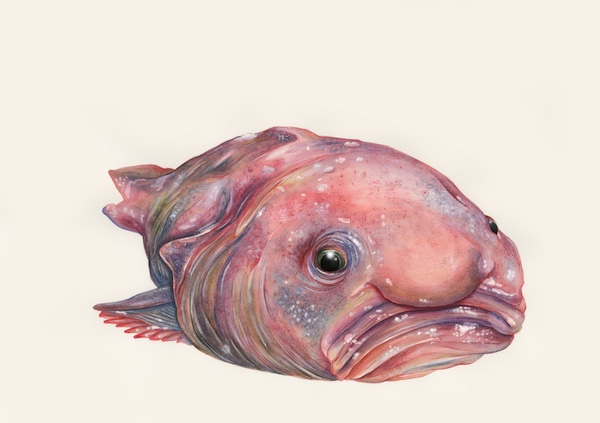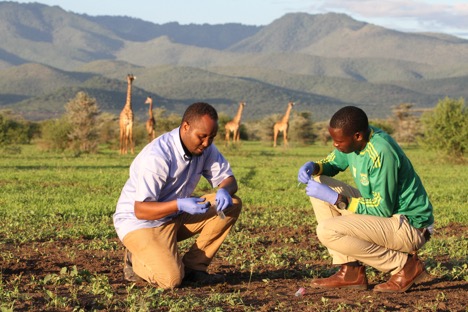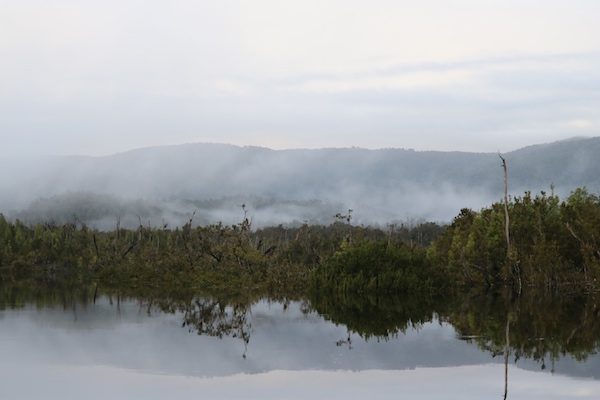Where is Sri Lanka?
Sri Lanka is an island country off the southeast coast of India.
Meet
Andrew Kittle & Anjali Watson

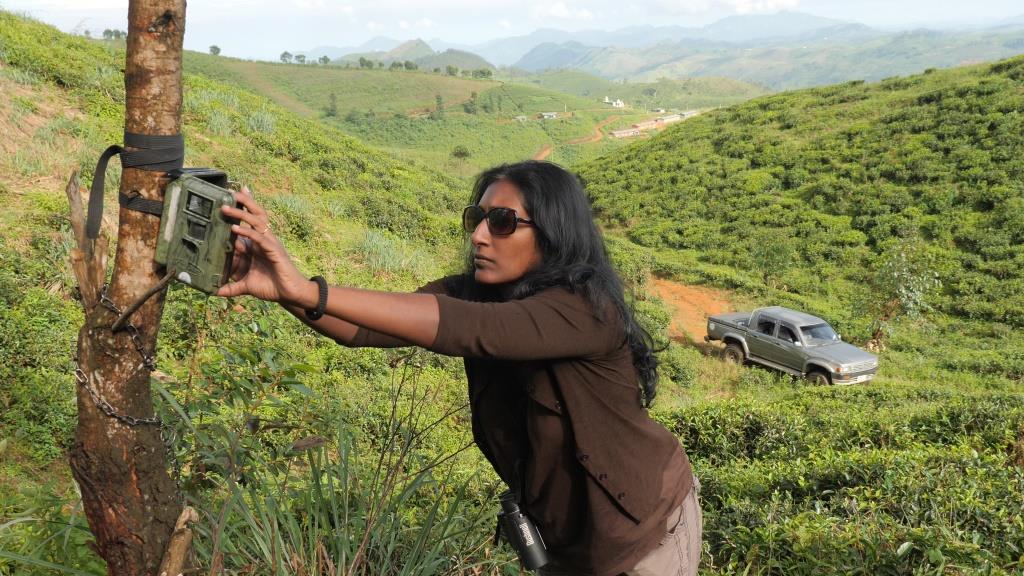
Andrew (top) and Anjali (bottom) setting remote camera traps to capture photographs of passing leopards. © wwct.org
Today we meet Andrew Kittle and Anjali Watson of the Wilderness & Wildlife Conservation Trust, a Sri Lankan group that aims to conserve Sri Lanka’s wildlife and wilderness areas.
Andrew, a zoologist, and Anjali, an ecologist, carry out scientific studies and work with local communities to raise environmental awareness. Studying leopards and how they affect people is a major part of their work.
We talk to Andrew to learn more about their work!
Mongabay Kids: What are the conservation goals of your organization? How do you explain why these goals are important to people who may not know about them or agree with them?
Andrew: Our conservation goals for the Wilderness & Wildlife Conservation Trust are to ensure that wild spaces and the wildlife that inhabit these spaces are allowed to flourish.
We are based in Sri Lanka and focus mostly here but are also interested in global conservation. We have become very focused on the protection of the Sri Lankan leopard which is the only big carnivore in Sri Lanka.
These goals are important because for the world to be healthy it requires intact wild habitats like forests and grasslands. For ecological systems to work effectively, they need the wildlife communities that inhabit them to thrive.
People have built very complex civilizations but for these to work they require the natural world to be working properly too. Today climate change is a big issue and finally most people are realizing that it is very important to treat our earth well.
For the Sri Lankan leopard in particular, it is important to keep this species in existence for several reasons. Firstly, the leopard has inherent value, which means that it is a living creature deserving of life.
Secondly, the leopard has ecological value as it is a top (apex) predator and is probably very important for keeping the ecosystem in balance. For example, if there were no top predator (leopard), then the number of deer might increase a lot because they are not being naturally hunted by other animals. In turn the deer might eat more and more vegetation which would have a big impact and result in lower biodiversity and a less balanced system.
Thirdly, leopards have an economic value because lots of people come to Sri Lanka to see them. Because there are no bigger carnivores like lions and tigers, leopards don’t have to be shy here and leopards provide money to people that work in and around National Parks.
Mongabay Kids: How are you trying to meet your conservation goals?
Andrew: We use a lot of different methods to try and meet our conservation goals. One tool we use a lot is research. We conduct studies in different parts of the island to try and get a better understanding of the leopard population in Sri Lanka, its distribution — where it lives — and what it eats. Only by understanding the ecology of the leopard here are we going to be able to come up with sensible ways to conserve the species.
Because the leopard is solitary and elusive — very hard to see — it can also be very challenging to study.
We use a lot of remote cameras in our work which are cameras that we set up in the forest or wherever we are looking for leopards. The remote cameras have sensors that can detect when animals are in front of them, which causes them to take photos. That way we don’t have to be there and we can still get lots of photos of leopards and other animals.
Each leopard has a unique spot pattern (like a fingerprint) which makes it pretty easy to tell one leopard from another. We use this to identify individuals and then we can estimate how many there are in a particular area.

We also spend a lot of time collecting leopard poo! This is because leopards (like other cats) have a short gut and when they eat, the hair, bones, quills, teeth of the animals that they eat pass through their systems quickly and come out in the scat (fancy name for poo). We can then look at the hairs under a microscope and we can tell what the leopard has been eating.
Did someone call for a dung beetle?

In order to conserve wildlife, however, it is necessary to do more than just understand their habits and behaviours. It is also very important that the people that live close to wildlife remain happy to share space with these animals – which can be tricky when the animals are large carnivores like leopards.
We therefore conduct a lot of education and awareness programs to people who live on the edges of protected areas or in unprotected areas where wildlife also lives.
Often people can get scared of wildlife even though the animals are not going to do them any harm. This usually happens when people don’t understand the animals — for example they think leopards are fierce hunters who are going to jump on them!
Actually, leopards are very shy and 99% of the time will get out of the way if they know people are around. Once people understand these kinds of things, they are less scared and it is easier for them to live with wildlife.

Another important thing for wildlife conservation is to ensure animals have good available habitat. This means that we try to make sure that wilderness areas do not get destroyed and that corridors between protected areas exist so that animals can move safely along them.
At the moment we are working in the Central Highlands of the island, where leopards live in and among tea estates, to increase the forest cover along the top ridgelines where they move.
We have a group of interested kids from the local tea estate community school who are our “Forest Guardians” and they have been planting trees along the ridgeline to improve the habitat for leopards and other wildlife.
Last August we got a very good artist from Colombo – the capital of Sri Lanka – to come and paint a huge mural on the side of the tea estate community school which shows the forest and wildlife from the area. The school kids took part in the painting and it helped to make the school look really nice and also to remind the kids about the special place in which they live.
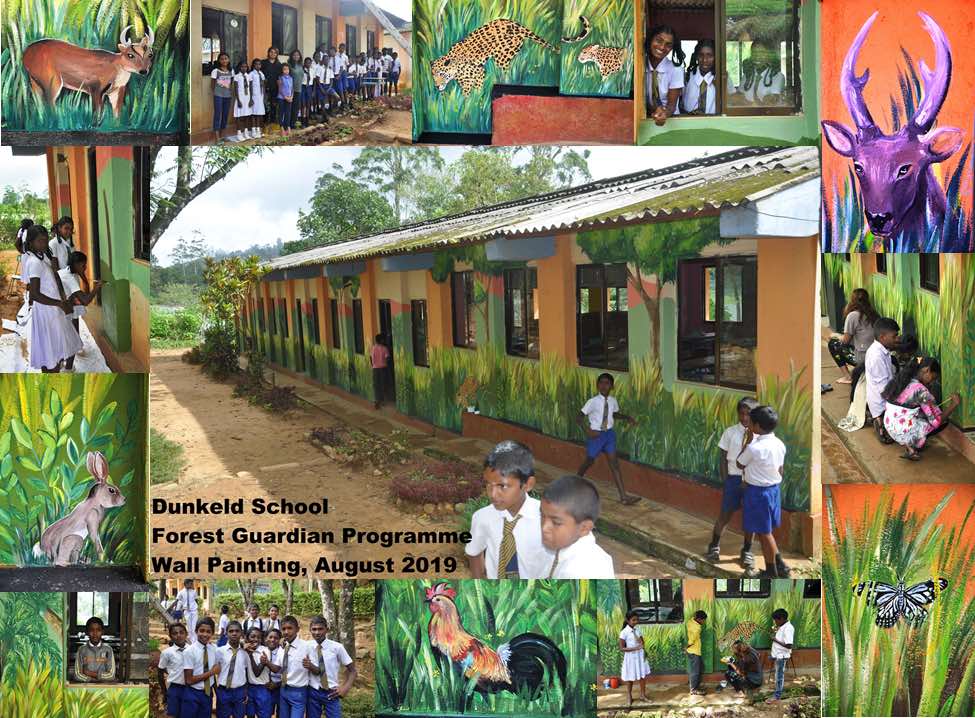
Mongabay Kids: How do you hope your work will help people better understand and conserve leopards?
Andrew: Again, speaking about leopards, we hope that by better understanding the leopard people will be less afraid and more willing to share their space with these amazing animals.
We have seen this in action many times. For example, once there was a leopard that had been seen close to a tea estate community and the people there were scared. A couple of community dogs had been killed and some of the people wanted the leopard to be caught and moved.
Through our work we were able to explain to them that the leopard was a female with cubs and that she was just trying to feed her young. At this time small prey animals are more often taken by leopard mothers and it was likely that she would not hang around for long.
We also suggested that people keep their dogs inside at night during this period. Sure enough, some people in the community saw the mother and cubs and because they kept their dogs in, more were not taken and the leopard moved away.
Some of the women in the community also really understood the leopard as she worked to feed her growing cubs — just as they do with their kids — and felt much better towards her as a result.
Another example is from our remote camera work which shows that in the tea estate lands — which are unprotected and have a very high human population — leopards have adapted by moving only in the night.
We often get photographs from our cameras of people walking on trails in the day and leopards on the same trails at night. When people understood this and were able to see this information, they also felt more relaxed.
Conservation work in Sri Lanka is made easier by the fact that the dominant religion is Buddhism because Buddhism is quite clear about the importance of wildlife and the importance of live and let live.
There is a famous story in Buddhism about the Buddha taking the form of a deer in order to stop a king from hunting wildlife and in fact teaching the king the importance of living wildlife which from that day on the king worked to protect.
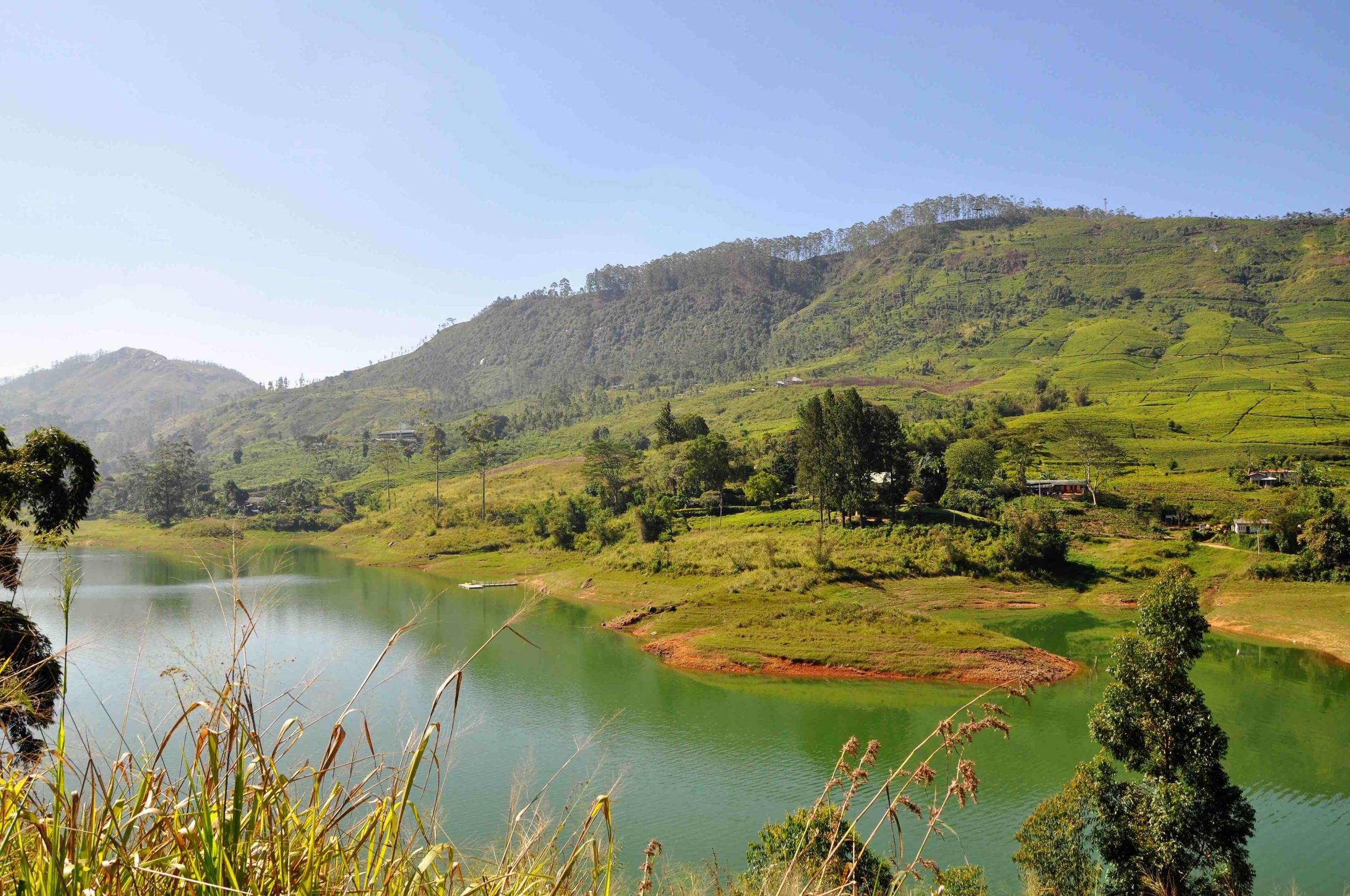
Mongabay Kids: What do you want kids to know about leopards that they may not know?
Andrew:
The leopard in Sri Lanka is a distinct genetic sub-species, which means that it is a little bit different from other leopards, even those in nearby India.
This is because it has been isolated on the island of Sri Lanka for thousands of years and importantly, it has been here without any other big predator – like lions or tigers. This makes the Sri Lankan leopard unique in the world as the top predator for such a long time.
Another interesting thing about leopards is that although they are called “solitary,” they actually communicate quite a lot with each other, mostly using scent. They have special scent glands which they use to deposit a musky smell that allows other leopards to know who is who and how recently others have been around.
Female leopards have home ranges that are big enough to provide food and shelter for herself and her cubs — usually 2-3 every 1.5-2 years. Male leopards have much larger ranges that usually overlap the ranges of several females.
Mongabay Kids: How did you become interested in leopards?
Andrew: Both Anjali and I love animals and wildlife and we volunteered on a number of projects when we were much younger, including with sea turtles, monkeys and sloths.
Anjali was born and grew up in Sri Lanka and was always interested in the leopard and it didn’t take much encouragement for me to become interested.
When we started working here 20 years ago there was surprisingly very little information about the leopard because all of the research and management was based on the elephant.
We started our first project to try and fill this gap in knowledge and one thing has led to another and we have now worked all over the island and are still learning about the leopard here!
Mongabay Kids: What advice do you have for young people who are interested in conservation work?
Andrew: To follow your heart and do it! This kind of work is very challenging and will not make you a lot of money, but it can be very rewarding and allows you to learn about amazing animals, often in beautiful locations.
There are now lots of volunteer opportunities available which allow you to get some hands-on experience on wildlife conservation projects and following this route will allow you to know for sure if this is what you want to do.
It is also important to remember that this kind of work is not all about interacting with animals — in fact an important part of a lot of conservation work is NOT interacting with the animals but letting them live undisturbed.
We rarely see leopards — except on our remote camera photographs — and we are happy to keep it that way – even though when we do see them we are thrilled because it means that in landscapes where people and leopards are sharing space they are doing so in peace.
This interview was first published in March, 2021.

